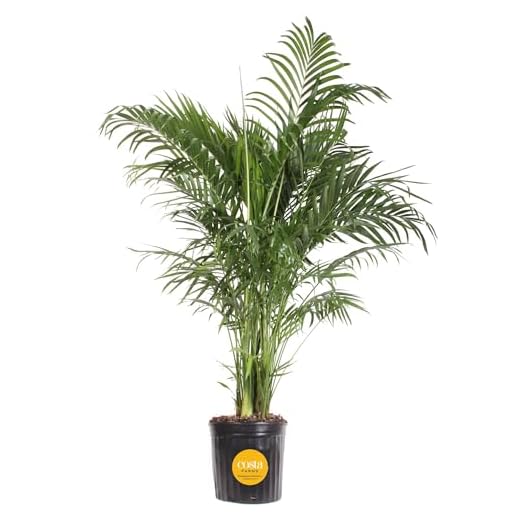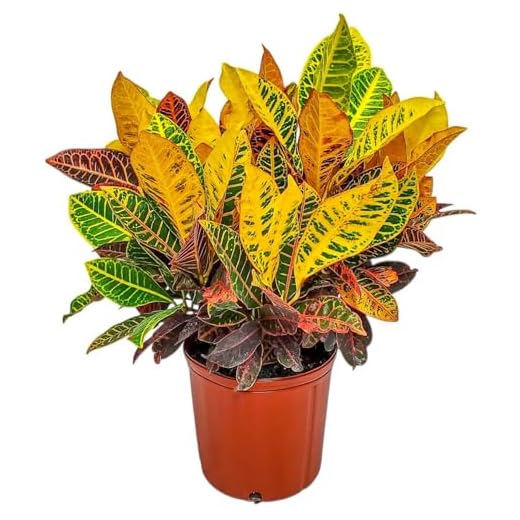

It’s crucial to stay informed about which houseplants might pose a risk to our furry companions. The plant in question contains compounds that can lead to gastrointestinal upset in felines. Symptoms such as drooling, vomiting, or diarrhea may occur if ingested. Keeping these plants out of reach is a wise decision to ensure your pet’s well-being.
As an 8-year-old Scottish Fold, I’m all about lounging in cozy corners of my home, but I also care about my health. If you suspect that your curious kitty has nibbled on any part of this particular plant, don’t hesitate to consult your veterinarian. They can provide the best guidance on what steps to take next.
While many green companions add beauty to our surroundings, it’s essential to be vigilant. Always research any new addition to your indoor jungle to keep your feline buddy safe and sound. Remember, a little precaution goes a long way in ensuring a happy, healthy home for both you and your cat.
Are Croton Plants Safe for Felines?
Absolutely not! The leaves of this shrub contain compounds that can lead to gastrointestinal distress, excessive drooling, and even more severe reactions. If you suspect I have nibbled on any part of this shrub, it’s crucial to seek veterinary advice immediately.
Signs of Ingestion
Should I come into contact with this shrub, watch for the following symptoms:
- Vomiting
- Diarrhea
- Drooling
- Lethargy
Precautions to Take
To keep me safe, consider these steps:
- Remove any such shrub from your home.
- Educate everyone about the dangers associated with this type of foliage.
- Opt for non-harmful greenery instead.
Staying informed helps ensure a safe environment. Let’s keep our homes free from hazardous vegetation!
Identifying the Toxic Components of Croton Plants
As a curious feline, I’ve learned that the danger in certain greenery lies within specific compounds. The culprits in these vibrant specimens are primarily diterpenes, which can cause gastrointestinal distress in my kind. Symptoms such as vomiting, drooling, and even lethargy may arise if ingested. The level of toxicity varies among different types, but caution is always advisable.
Key Compounds to Watch For
In this particular species, compounds like phorbol esters are significant. These can lead to irritation and discomfort if consumed. Even the sap can irritate the skin of sensitive critters. It’s wise to keep a safe distance from these leafy intruders, ensuring a comfortable and safe environment for all furry companions.
Signs of Distress
If you suspect exposure, monitor for signs such as excessive drooling, vomiting, and difficulty in swallowing. Immediate veterinary attention is essential if any symptoms appear. Keeping an eye on your surroundings can help avoid these mishaps. Stay safe and enjoy the company of green friends that are safe for us!
Symptoms of Croton Poisoning in Cats
If my feline friends happen to chew on the leaves, they may experience a range of unsettling symptoms. Common signs include vomiting, which can occur shortly after ingestion. Diarrhea is another frequent issue, often leading to dehydration if not addressed promptly.
Additionally, my buddies might show signs of distress like drooling or difficulty swallowing. Some may even exhibit a lack of appetite, which could indicate discomfort. If you notice any of these behaviors, it’s important to keep a close eye on them.
In more severe cases, cats may experience abdominal pain or lethargy. If my pals are unusually sleepy or show reluctance to move around, it might be time to seek help from a veterinarian. Quick action can make a difference in their recovery.
Monitoring for these symptoms is crucial. If any of these signs appear, contacting a vet immediately can ensure the best care for our furry companions. Always better to be safe than sorry!
Immediate Steps to Take if Your Cat Ingests Croton
If you suspect your furry friend has consumed parts of a harmful shrub, act swiftly. First, remove any remaining foliage from their vicinity to prevent further ingestion.
Contact your veterinarian immediately or call an animal poison control hotline. Provide them with details such as the quantity ingested and any symptoms observed. Do not wait for symptoms to appear before seeking help.
If your companion is showing signs of distress, such as vomiting or lethargy, keep them calm and comfortable while waiting for professional guidance. Avoid inducing vomiting unless specifically instructed by a veterinarian, as this can sometimes worsen the situation.
Home Remedies and Prevention
While waiting for professional help, ensure your pet has access to fresh water to stay hydrated. Monitor their behavior closely for any escalating symptoms. If your feline is underweight, consider checking out the best cat food for underweight cats to ensure they maintain a healthy weight during recovery.
To prevent future incidents, evaluate your home for any other potentially harmful greenery. It’s essential to be proactive in creating a safe environment for your beloved companion.
Preventing Access to Dangerous Greenery
To keep me safe from harmful greenery, ensure that any hazardous species are out of reach. Elevate your indoor plants on high shelves or in hanging planters. Use window sills that are not accessible to me and place barriers like pet gates in critical areas.
Utilize natural deterrents such as citrus scents. Cats generally dislike these odors. Consider placing citrus peels in the vicinity of the plants or using citrus-scented sprays. This can discourage exploration.
Another effective method is to create a dedicated space for safe greenery. Opt for non-harmful varieties that I can interact with without worry. This way, I can enjoy the presence of greenery while minimizing risks.
Regularly monitor your surroundings. Inspect areas where I might have access to hazardous species. If you notice any signs of interest or attempts to explore, take immediate action to reinforce boundaries.
For those who engage in home improvement, incorporating features such as pet-proof screens or barriers around your greenery can be beneficial. This can also enhance the overall aesthetic of your space.
| Method | Description |
|---|---|
| Elevate Plants | Place greenery on high shelves or in hanging pots. |
| Citrus Deterrents | Use citrus peels or sprays to keep me away from harmful species. |
| Safe Greenery | Choose non-harmful varieties for my interaction. |
| Regular Monitoring | Check areas for potential access to dangerous species. |
| Pet-Proof Features | Install barriers or screens around your greenery. |
Consider using technology to assist in this effort. For example, a best rechargeable digital air compressor can help create a safe environment by maintaining air quality in your space. This can also contribute to the overall health of both me and the safe plants.
Safe Alternatives to Croton for Cat Owners
If you’re looking to brighten up your home without risking your furry friend’s health, consider these safe choices:
- Spider Plant: Easy to care for and non-harmful, this greenery thrives in various light conditions and even helps purify the air.
- Ponytail Palm: With its unique appearance, this succulent requires minimal watering and poses no danger to curious paws.
- Bamboo Palm: A popular indoor plant that not only enhances decor but is also safe for pets.
- Boston Fern: Lush and beautiful, this fern is safe for felines and adds a touch of greenery to any space.
- Areca Palm: This elegant plant not only looks great but also filters indoor air pollutants and is safe for your companion.
- Parlor Palm: Known for its resilience, this plant is non-toxic and thrives in low light, making it perfect for any room.
When selecting greenery, always double-check labels or consult a vet to ensure safety. Keeping your home beautiful and your buddy safe is totally possible!
Consulting a Veterinarian: When to Seek Help
If you suspect your furry friend has ingested any part of a harmful shrub, contact a veterinarian immediately. Don’t wait for symptoms to appear, as early intervention can make a significant difference in recovery.
Monitor your companion for any unusual behavior, such as lethargy, vomiting, or excessive drooling. If you notice any of these signs, it’s crucial to get professional advice as soon as possible. Keep your vet’s contact information handy for emergencies.
In case of ingestion, provide the vet with details about the type of greenery consumed, the amount, and the time of ingestion. This information aids in determining the best course of action.
Regular check-ups are a good practice to maintain overall health. Discuss any concerns about your living environment, including potential hazards, during these visits. Your vet can suggest alternative options that are safe for your furry pal.
Always prioritize the well-being of your pet. If in doubt, it’s better to err on the side of caution and seek veterinary assistance. Your companion’s health is priceless, and getting the right help swiftly can ensure they remain happy and healthy.








